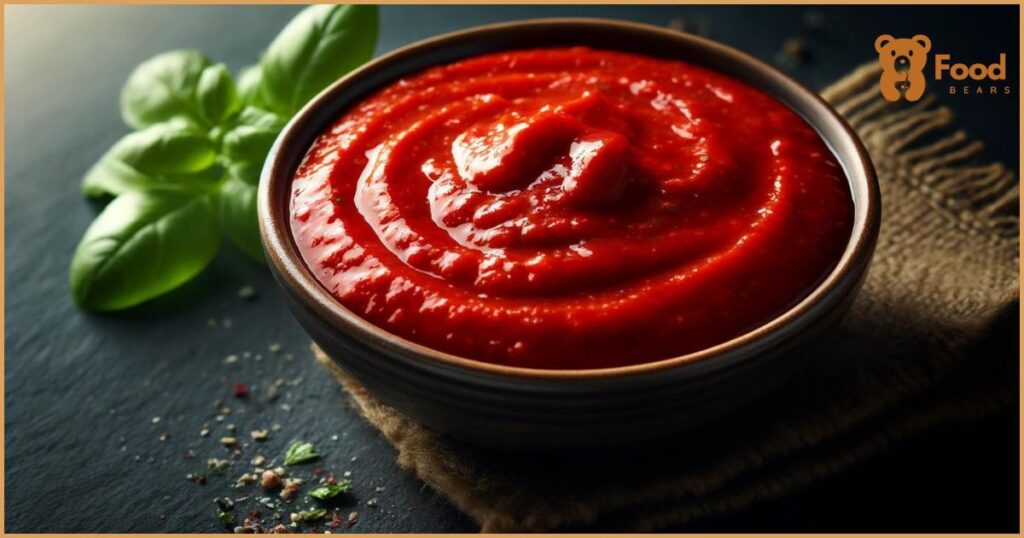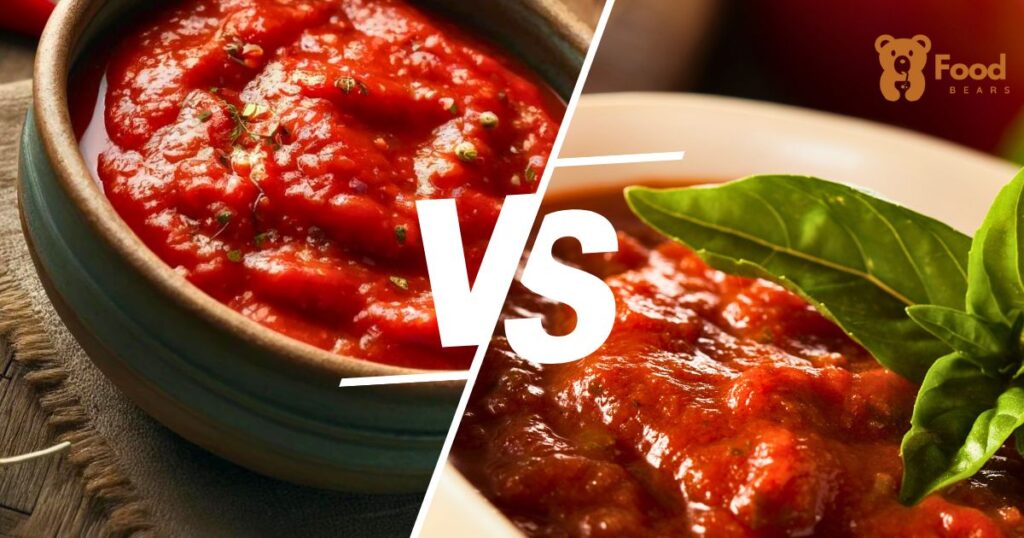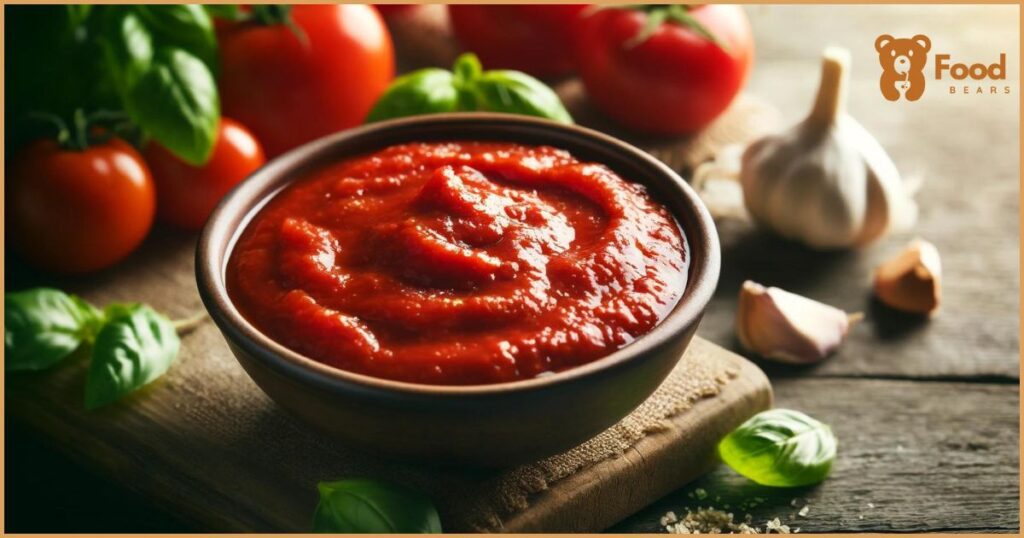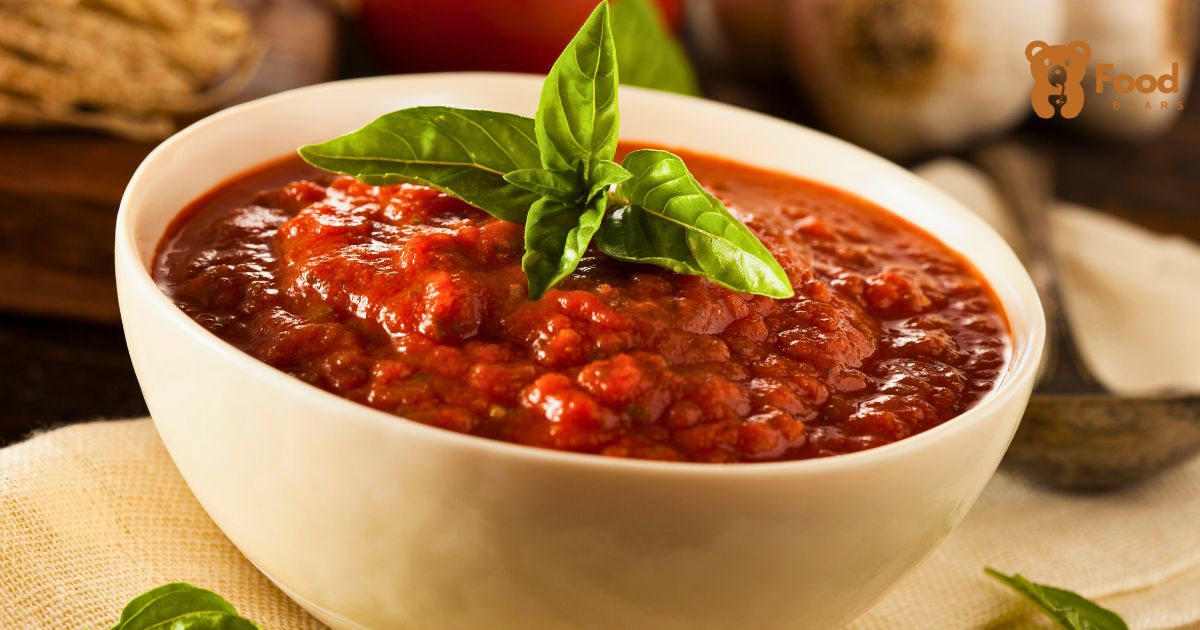Have you ever found yourself staring at a jar of pizza sauce and wondering if it’s just for pizzas? You’re not alone.
Whether you’re a kitchen newbie or a seasoned chef, the versatility of pizza sauce can be a game-changer in your culinary repertoire. Today, let’s explore an intriguing possibility: using pizza sauce as spaghetti sauce.
How often do you switch up your sauce game? Do you stick to the traditional uses, or are you adventurous with your ingredients? Think about the last time you unconventionally used a sauce. Did it surprise you in a good way?
This guide is all about breaking norms and refreshing your meals. It’s perfect for anyone looking to simplify their cooking without sacrificing taste. So, let’s dive in and stir up some culinary creativity with pizza sauce!
Can You Use Pizza Sauce for Spaghetti Sauce?

Absolutely, pizza sauce can be a practical substitute for spaghetti sauce. The versatility of pizza sauce makes it more than just a topping for your favorite pizza. It can seamlessly transition to a robust spaghetti sauce with a few tweaks.
Why consider this swap? Here are a few scenarios where pizza sauce comes to the rescue:
- Unexpected Guests: Imagine making spaghetti and realizing you’re out of marinara. Pizza sauce is an excellent stand-in.
- Pantry Limitations: Sometimes, it’s about using what you have. If pizza sauce is all in the cupboard, it’s your golden ticket to a delicious pasta meal.
- Flavor Preference: Some folks prefer the bolder, herb-infused pizza sauce flavor for their pasta dishes.
Practicality shines through in everyday cooking. Transforming pizza sauce into spaghetti sauce simplifies meal prep and adds a delightful twist to your pasta dishes, efficiently using leftover ingredients.
Let’s not forget it’s a fantastic way to reduce waste and get creative with your meals!
Difference Between Pizza Sauce and Spaghetti Sauce

The distinction between pizza sauce and spaghetti sauce or marinara sauce is not just about flavor but also their preparation, consistency, and how they enhance different dishes in Italian cuisine.
1. Preparation
Pizza and spaghetti start with similar base ingredients but differ significantly in their preparation methods.
- Pizza Sauce: It’s typically made from uncooked, pureed tomatoes. This raw preparation helps retain a fresh tomato flavor, which is ideal for the quick cooking time of pizza.
- Spaghetti Sauce: This sauce usually starts with cooked tomatoes and may include a simmering process with additional ingredients like herbs, meats, and vegetables. The cooking helps develop a richer, deeper flavor suitable for coating pasta.
2. Flavor Profile
The spices and seasoning in each sauce are tailored to complement their respective dishes effectively.
- Pizza Sauce: Seasoned with oregano, garlic salt, onion powder, and sugar for a tangy, sweet flavor complementing rich cheeses.
- Spaghetti Sauce: Typically features a more subdued spice profile but includes robust flavors from ingredients like roasted garlic and meats. Aiming for a more profound and savory taste that enhances pasta dishes.
3. Consistency
Consistency is another critical difference that impacts how each sauce performs with its intended dish.
Pizza sauce is thicker and smoother, a necessity to prevent the dough from soaking up too much liquid and becoming soggy.
In contrast, spaghetti sauce is usually thinner with a more varied texture. Including chunks of vegetables or meat helps it cling to and envelop pasta noodles more effectively.
4. Substitution
While you can technically substitute one sauce for another, adjustments are often necessary to achieve optimal results.
- Thinning Spaghetti Sauce: To use spaghetti sauce as a pizza sauce, consider thinning it with a bit of water to match the consistency of the traditional pizza sauce.
- Enhancing Pizza Sauce: When using pizza sauce for pasta, you might need to add extra herbs and perhaps some water to achieve the desired flavor and consistency for a spaghetti dish.
Homemade Pizza Sauce from Spaghetti Sauce (Marinara Sauce)

Transforming spaghetti sauce into pizza sauce is about saving time and optimizing your pantry staples creatively.
Here’s how you can customize spaghetti sauce to suit the robust needs of a pizza base, with simple adjustments to flavor and consistency.
Step-by-Step Guide to Modifying Spaghetti Sauce for Pizza:
- Choose a Quality Spaghetti Sauce: Start with a spaghetti sauce you enjoy, as the base flavor will carry through.
- Thicken the Sauce: Since pizza sauce requires a thicker consistency, simmer your spaghetti sauce over medium heat to reduce its volume by about 20-25%. This thickens the sauce and intensifies the flavors, which is crucial to avoid a soggy pizza base.
- Adjust the Seasonings:
- Boost the Herbs: Add 1 teaspoon of dried oregano and basil to evoke the classic pizza sauce flavor.
- Enhance the Tang: Incorporate a tablespoon of balsamic vinegar to add a slight tanginess that pizza sauce is known for.
- Balance with Sweetness: A pinch of sugar (about 1/2 teaspoon) can help balance the acidity if the sauce is too tart.
- Add Garlic and Onion Power: For an immediate flavor boost, mix in 1/2 teaspoon of garlic powder and 1/2 teaspoon of onion powder. These provide a quick infusion of flavors that typically take longer to develop in cooked sauces.
- Simmer to Perfection: Let the sauce simmer for 10-15 minutes after adding your adjustments. This step is crucial for the flavors to meld together correctly and achieve the desired consistency.
- Cool Before Spreading: Allow the sauce to cool to room temperature before applying it to your pizza dough. This helps ensure it spreads evenly and doesn’t affect the dough’s temperature.
Why This Works:
Using spaghetti sauce as a starting point for pizza sauce is convenient and cost-effective. It allows you to utilize what you already have, reducing waste while allowing you to tweak the flavor precisely to your liking.
About 85% of homemade pizza lovers prefer customizing their sauce to enhance the overall taste of their pizzas.
This approach isn’t just about following a recipe. It’s about adapting and experimenting to find what works best for your taste and the ingredients you have on hand.
It’s a creative process that turns a simple pizza night into a personalized culinary experience.
How to Make Pizza Sauce into Spaghetti Sauce

Transforming pizza sauce into spaghetti sauce is a straightforward process that adds depth and variety to your culinary toolkit. Here’s a detailed guide to enhance your pizza sauce into a robust spaghetti sauce:
- Start with Quality Pizza Sauce: Use your pizza sauce as a base. It provides a solid foundation with its rich tomato flavor, whether homemade or from a jar.
- Simmer to Develop Flavors: Place the pizza sauce in a saucepan over low to medium heat. Allowing it to simmer gently will help deepen the flavors, making it more suitable for spaghetti.
- Incorporate Fresh Ingredients:
- Sautéed Garlic and Onions: Finely chop one small onion and two garlic cloves. Sauté these in 1 tablespoon of olive oil until they’re translucent, then stir into the simmering sauce to add savory depth.
- Add Vegetables: For a heartier sauce, add 1/2 cup of chopped bell peppers or 1/2 cup of sliced mushrooms. These should be sautéed until soft before being added to the sauce.
- Enhance with Herbs and Spices:
- Basil and Oregano: Stir in 1 teaspoon of dried basil and oregano to bring in those classic Italian flavors.
- Red Wine: Adding 1/4 cup of red wine can enrich the sauce, contributing a complex flavor layer. Let the sauce simmer for an additional few minutes to evaporate the alcohol.
- Sugar: A pinch of sugar (about 1/2 teaspoon) can help balance the flavors if the sauce tastes too acidic.
- Adjust Consistency: If the pizza sauce is too thick, thin it with water or vegetable broth. Adding 1/4 to 1/2 cups can effectively achieve the desired consistency for coating pasta.
- Simmer for Integration: Allow the sauce to simmer together for 20-30 minutes. This duration lets all the ingredients meld together and thickens the sauce to the perfect texture for spaghetti.
- Season to Taste: Before serving, taste your sauce and adjust the seasoning if necessary. Extra salt or a dash of black pepper can often elevate the entire dish.
- Finish with Fresh Ingredients: Once off the heat, stir in some freshly chopped basil or parsley for a burst of freshness right before serving.
Following these steps will transform your pizza sauce into a delightful spaghetti sauce that brings new life to your pasta dishes. These additions enhance the flavor and tailor the texture and richness to better suit a hearty plate of spaghetti.
Can You Mix Pizza Sauce and Spaghetti Sauce Together?
Mixing pizza sauce and spaghetti sauce can be an inventive way to enhance your dishes with a unique blend of flavors.
This fusion combines the robustness of spaghetti sauce with the tangy zest of pizza sauce, allowing culinary creativity in your kitchen.
Outcomes of Mixing Both Types of Sauces
When you mix pizza sauce and spaghetti sauce, you create a hybrid that offers the best of both worlds:
- Flavor Complexity: The mixture results in a sauce with the spice-driven punch of pizza sauce and the depth of a simmered spaghetti sauce.
- Adjusted Consistency: Mixing these sauces can make the consistency ideal for various dishes, balancing between too thick and too thin.
Enhancing Flavor Profiles in Dishes
Here are some examples where a mixed sauce might elevate the dish:
- Baked Ziti: Using a combination of both sauces in baked ziti can introduce a nuanced flavor that complements the richness of the cheeses and the heartiness of the pasta.
- Meatball Subs: A mixed sauce on a meatball sub adds an extra layer of flavor, enhancing the meatballs with a more complex tomato base that stands up to the robust flavors of the meat.
- Stuffed Peppers: Filling stuffed peppers with a mixture of these sauces can introduce a delightful flavor surprise, mellowing the potent pizza sauce with the gentler spaghetti sauce, making each bite a balanced experience.
By experimenting with these sauces, you’re not just cooking; you’re crafting a culinary experience that is both comforting and excitingly unpredictable. Each dish becomes a canvas for your creativity, where mixing sauces can transform the ordinary into something extraordinary.
Advanced Tips and Tricks
Regarding versatility in the kitchen, pizza sauce isn’t just for pizza. Let’s explore some advanced tips and tricks for using pizza sauce in non-traditional ways, such as in lasagnas or meatball subs.
Creative Uses for Pizza Sauce
- Lasagna: Swapping traditional tomato sauce with pizza sauce in lasagna can inject a robust, herby flavor that complements the richness of the cheese and meat. Mix the pizza sauce with ricotta cheese to soften its intensity before layering to ensure it blends well.
- Meatball Subs: Use pizza sauce as a base for meatball subs to give an extra tang and spice that enhances the meaty flavors. The thicker consistency of pizza sauce holds up well against the bread and meat, ensuring every bite is flavorful.
- Stuffed Bell Peppers: For a quick and tasty meal, fill bell peppers with rice, ground meat, vegetables, and pizza sauce. The sauce’s concentrated flavors seep into the filling, creating a delicious meld of tastes.
Making Healthier Sauce Choices
- Reduce Sodium: Many store-bought pizza sauces are high in sodium. Opt for low-sodium tomato bases, or make your pizza sauce with fresh tomatoes and herbs to control the salt content.
- Boost Fiber and Nutrients: Add finely chopped vegetables like spinach, carrots, or zucchini to the sauce. These not only enhance the nutritional profile but also add texture and flavor.
- Cut Down on Sugar: If your pizza sauce is sweeter, reduce or omit added sugars. You can also balance the acidity with natural sweeteners like finely grated carrots or a bit of honey, which provide additional nutrients.
- Use Healthy Fats: Instead of processed oils, opt for a splash of olive oil, which is rich in monounsaturated fats and good for heart health.
Nutritional Considerations
- Calorie Control: When using pizza sauce in dishes, be mindful of portion sizes, as the sauce can be calorie-dense due to its oil and sugar content.
- Watch for Allergens: Homemade sauce is a better option for those with dietary restrictions as it allows for complete control over the ingredients, ensuring no unwanted allergens are included.
Using pizza sauce in these inventive ways diversifies your menu and enhances your meals with bold and familiar flavors.
You can enjoy the richness of pizza sauce in a healthier, more nutritious manner by making slight adjustments.
Whether it’s a hearty lasagna or a simple meatball sub, these tips can help you make the most out of a simple jar of sauce.
Conclusion
In exploring the culinary versatility of pizza sauce, we’ve uncovered its potential beyond the pizza. Pizza sauce can be adeptly transformed to suit spaghetti, enhance lasagnas, and elevate meatball subs.
By adjusting its consistency and flavor, we tailor this robust sauce to various dishes, demonstrating its practicality in the kitchen.
Moreover, integrating healthier ingredients and modifying seasonings allows us to customize and enrich the nutritional value of our meals, proving that pizza sauce is convenient and adaptable.
Whether you’re a novice in the kitchen or a seasoned chef, consider pizza sauce a dynamic component in your cooking repertoire.
I encourage you to experiment with the tips discussed and share your culinary discoveries. Dive into the possibilities of pizza sauce and let it inspire creativity in your meals.

Ella Foster, co-founder of FoodBears.com, is a skilled writer whose love for cooking fuels her creative work. Her passion for experimenting in the kitchen brings authentic flavor and culinary inspiration to every piece she crafts for the platform.
